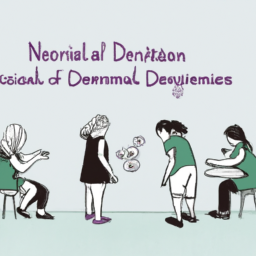Neurodevelopmental disorders encompass a wide range of conditions that affect brain development, leading to various challenges in daily functioning. These disorders, including autism spectrum disorders (ASD) and attention deficit hyperactivity disorder (ADHD), are characterized by difficulties in social interaction, communication, and cognitive abilities. One crucial aspect in understanding these disorders is identifying the period in an individual's lifespan when symptoms typically begin to manifest.
Autism spectrum disorders (ASD) are a diverse group of conditions characterized by some degree of difficulty with social interaction, repetitive behaviors, and limited interests or activities. While the exact cause of ASD is still unknown, studies suggest that symptoms typically emerge during early childhood, usually within the first three years of life. However, some individuals may not receive a diagnosis until later in life, especially those with high functioning autism who may exhibit fewer noticeable symptoms.
On the other hand, attention deficit hyperactivity disorder (ADHD) is a common neurodevelopmental disorder characterized by age-inappropriate levels of inattention, hyperactivity, and impulsivity. Initially considered a childhood disorder, research indicates that ADHD persists into adulthood in approximately two-thirds of cases. Therefore, symptoms may continue throughout an individual's lifespan, albeit potentially presenting differently as they age.
The COVID-19 pandemic has brought new challenges to child development, potentially affecting neurodevelopmental disorders. Studies suggest that children born in the COVID-19 era may lag in certain skills and display more challenging behaviors. Experts emphasize the need for increased support and resources for parents to address these specific challenges and promote healthy development.
Interestingly, the ratio of males to females diagnosed with ADHD is significantly imbalanced. Evidence suggests that this discrepancy may be attributed, at least partially, to underdiagnosis or misdiagnosis of females due to unique symptom presentation. Further research is necessary to understand the underlying reasons for this gender disparity and improve identification and support for all individuals with ADHD.
While neurodevelopmental disorders may not intensify with age, the symptoms individuals experience may change or impact them differently over time. Some individuals with these disorders employ a survival strategy known as "autism masking." Autism masking involves mimicking neurotypical behaviors in social situations to fit in, which can be psychologically and emotionally draining.
In conclusion, the symptoms of neurodevelopmental disorders typically begin during early childhood for conditions like ASD and continue into adulthood for ADHD. The COVID-19 pandemic poses additional challenges for children's development, and increased support for parents is essential. The gender disparities in ADHD diagnosis highlight the need for improved understanding and identification of symptoms in females. Lastly, individuals with neurodevelopmental disorders may employ coping mechanisms, such as autism masking, to navigate social situations. Understanding the onset of these disorders at different stages of the lifespan is crucial in providing appropriate interventions and support for individuals affected by them.
